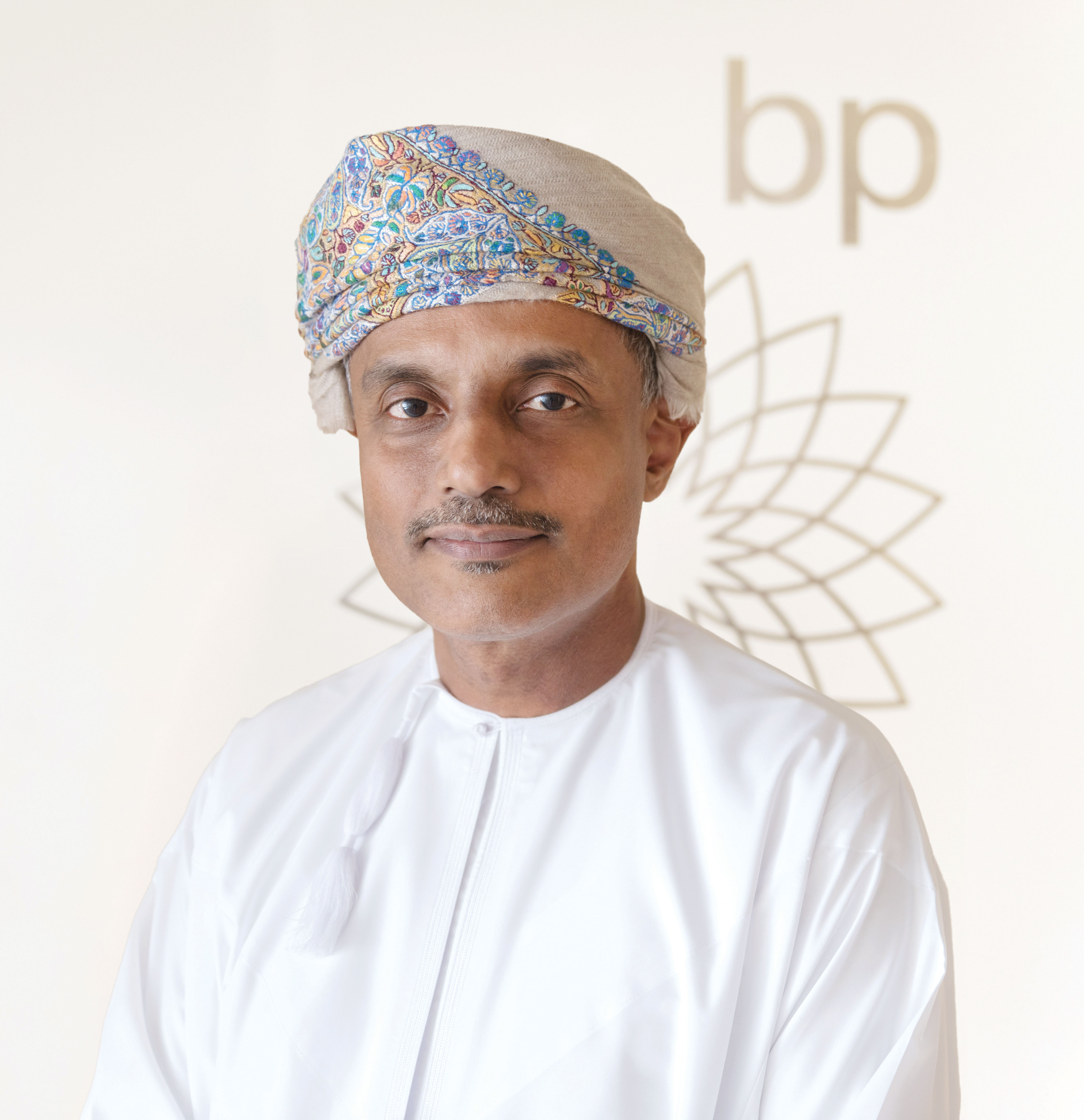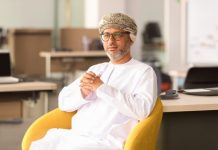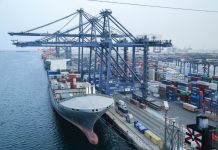The Khazzan project overall is now about 75 per cent complete and on track to deliver first gas by the end of 2017, says Yousuf Al Ojaili, President, BP Oman, in an interview with OER. He became President of BP Oman just over a year ago after working as the CEO of Oman Gas Company and, prior to that, worked in Petroleum Development Oman (PDO). Yousuf is the first Omani to lead BP Oman. BP has already achieved many milestones since he took over including raising the percentage of Omanis in leadership team to 53pc, signing the Khazzan Phase 2 agreement with the Ministry of Oil and Gas, and progressing the – First Gas delivery plan. In the interview, he reflects on BP Oman’s Khazzan gas development and how it will benefit Oman and its people:
Tell us about the Khazzan project
The Khazzan project is being delivered by BP Oman, alongside our partner, Oman Oil Company for Exploration and Production (OOCEP). It entails the development of the vast natural gas fields located in Block 61 concession area in central Oman. The Khazzan reservoirs are some of the Middle East’s largest unconventional tight gas accumulations; around 10.5 trillion cubic feet (tcf) of gas are recoverable, requiring specialised technology and expertise to access.
With its deep experience in this field, BP was chosen to a lead the $16bn development and operation of Khazzan. A huge construction operation has been underway in this remote location since the first phase of the project was sanctioned in late 2013. Over 12,000 workers are on-site building infrastructure, drilling wells, laying pipelines and erecting processing facilities so that gas can be extracted and flow into the national network. We expect first gas to be delivered in late 2017 with plateau production levels being reached when phase 2 of the project is completed by 2020.
What is the significance of the project for Oman?
First and foremost, Khazzan will make a tangible contribution to Oman’s energy security by ensuring continuing, stable and long-term domestic supplies of gas. By 2020, we expect some 1.5 billion cubic feet of gas a day (bcf/d) to be produced, equivalent to around one third of Oman’s current total domestic gas production. Continued high levels of production from Khazzan are expected for many years thereafter.
Our in-country value (ICV) programme associated with the project is also bringing wider benefits to Oman. Apart from direct employment of many Omanis, the wider Omani oil and gas supply chain is benefitting from many of the contracts that have been awarded, and those companies’ skills and capabilities are growing as a result. Talented young Omanis are being recruited via dedicated graduate programmes into managerial and specialist technical positions at BP Oman and Khazzan. All of these actions are helping build a bright future for Oman’s oil & gas industry.
We have formed important collaborations with Oman LNG and OOCEP to support the professional training of our technicians. We transfer our talented technician trainees to these organisations (to date 19 with OOCEP and 50 with OLNG) to get practical experience in a real life environment – an operational site – to build their capabilities in readiness for their roles at Khazzan. This programme is a great example of how we are trying to develop locals to become world-class technicians in the long term. It also demonstrates the collaboration happening across the oil and gas industry in Oman where different companies are working together for the benefit of the country.
Production from Khazzan will also help the country’s diversification process take off. Reliable gas supplies are needed for power sector and energy intensive industries which are just some of the sectors needed to diversify our industrial base.
You have recently completed the first year in BP. Can you share some of your experiences in the first year at the helm in BP?
When I arrived in 2015, I was impressed by the huge progress that had already been made on the project. We had a team of committed and talented people in place and the pace and quality of development work was exemplary.
There were clear areas of responsibility where I could bring my experience to bear. One of those was in helping to develop and integrate the project teams – those in charge of delivery of wells, infrastructure and the central processing facilities – as well as our teams in areas such as finance, HR, IT, procurement and communications and the contractors who work with us. Forging a one-team culture continues to be something that I think is crucial to the successful delivery of a complex project like this involving many people and disciplines. Encouraging adoption of BP’s core values throughout the teams – including the priorities we give to personal safety and responsibility – are at the heart of this and continues to be an area of personal focus.
Consolidating our management systems and improving our quality assurance policies have been another area of my responsibilities, with the aim of supporting our promise to deliver gas as cost-efficiently as possible to the Sultanate of Oman. We have made significant steps forward, allowing us to look to the future with great confidence.
I also take pride in being part of the negotiations with the Government of Oman to amend the Oman Block 61 exploration and production sharing agreement, extending the license area of the block to allow further development. Subject to final approval, this will add a further 1,000 sq km to the south and west of the original 2,700 sq km of Block 61, allowing the second phase of the Khazzan development to go ahead. Optimising the cost of project including number of and cost of wells was another team achievement and this proved BP’s capability to continuously review and reduce project costs.
What are the major challenges in this project?
There are many – but BP and our partners are well placed to meet them.
Finding the gas in the first place required using BP’s proprietary technology to acquire the largest ever onshore seismic survey in 2009, in an area covering around 2,700 sq km. This was followed by an extensive well appraisal and testing programme to evaluate the quality and volume of hydrocarbons present in the reservoirs, which are now being developed.
The next challenge is that the gas itself is located up to 5km underground in extremely hard rocks. This requires specialist drilling and production technologies – and ultimately around 300 vertical and horizontal wells will be needed over the 15-year lifetime of the project. Horizontal wells in particular represent a real technical challenge requiring a high degree of planning and technology application. BP brought the experience it has in developing gas in the US to Oman to develop this major project.
Then you have to consider the location of the field and the logistics involved in bringing such a huge project together. Khazzan is around 350km from Muscat – and is a remote, harsh desert environment. The development is from scratch – a logistical operation is needed to get equipment and materials into the areas and build the necessary infrastructure: 10 drilling rigs, 300 wells, 500 kms of pipeline, a huge two-train (eventually three-train) central processing facility, water and export pipelines, new access roads, telecommunications and power installations… and with an 12,000 workforce on-site at peak times, accommodation, medical and leisure facilities are also needed.
As previously mentioned, safety is a key priority, ensuring these people and teams work together safely and effectively is also a huge challenge, especially in such a tough working environment. Our experience in running major operations in other remote locations across the world is crucial to making this work, alongside the commitment and talent of our workforce.
What have been the big project milestones achieved during the first year in overcoming those challenges?
The award of three major pipeline contracts to Omani companies was an important early milestone after I arrived, signalling our commitment to delivering ICV. These have been followed by many further contract awards to Omani companies.
Getting all 10 drilling rigs completed, installed and operational was a crucial milestone achieved early in late 2015 and has enabled us to meet our drilling targets during the year since. In fact, records continue to be beaten by our Wells team – with the time it takes to drill each well becoming consistently shorter. The shortest time ever needed to drill a well at Khazzan was achieved earlier this summer.
February saw the signing of the Heads of Agreement to the previously mentioned extension to the production agreement for Block 61 – a crucial milestone in ensuring the full potential of Khazzan can be realised.
All of our teams have achieved significant safety records during the year and the overall performance is very strong. Further work occurs to ensure incidents are minimised and our workforce operates in the safest possible conditions. The Central Processing Facility (CPF) recently passed 50 per cent construction delivered with 17 million man hours without a Lost Time Incident.
The Khazzan project overall is now about 75 per cent complete and on track to deliver First Gas by the end of 2017.
Looking ahead, 2017 is of course a crucial year, with the main milestone being the delivery of First Gas by year-end. There are a number of milestones that needs to be passed to achieve this, including the completion of the CPF and all the pipelines, followed by full testing and commissioning of the facilities to ensure all is working as it should.
Can you tell us about the wider impact of BP’s work on Oman with special focus on the ICV?
BP Oman is committed to delivering ICV to Oman. This represents the total spend retained in the country to benefit business growth, contribute to human capability development, create employment and training opportunities and stimulate economic productivity.
One of our goals is to maximise the use of goods and services provided by Omani companies or produced in the Sultanate of Oman for our operation. We particularly support small and medium sized enterprises, helping them develop capabilities and standards. As a result, many Omani companies have won important contracts for the Khazzan field, including for key services such as rig construction, drilling and stimulation, pipeline manufacture and laying and the building of workforce camps and facilities.
‘Omanisation’ is another area of ICV focus. Attracting, developing and retaining the best local talent is our aim in order to build a sustainable, long-term organisation. We do this by creating exciting career opportunities and offering world-class training and development. Two graduate recruitment programmes are in place to attract the best young Omani talent. Our BP Oman Challenger programme launched in 2010 has so far recruited 55 Omani graduates and will give them tailored career plans while at the same time building skills in other disciplines. Also, we run a Technicians Training Programme which has recruited Khazzan’s engineers of the future – around 90 have been recruited since 2012 and they have gone through a four year training course to equip them with the skills they will need. Over 70pc of BP Oman employees are now Omanis, with our target to get to 90pc by 2025. Over half of the management team is Omani – up from 19pc at the start of the project.
The other main area of impact on Oman more widely is our Social Investment Programme. This supports sustainable, socio-economic development at a local level and is directly aimed at communities, the young and entrepreneurs. In line with our ICV strategy towards local content, Omanisation and diversification, our Social Investment Programme focuses on three main areas – Enterprise development, Education, and Energy Sustainability. Well over 30,000 people have benefited from educational and leadership programmes run which we have in partnership with other social investment specialists. We are now in the process of implementing our third year of the Social Investment Programme.
As one of the world’s leading companies in tight gas, BP is applying innovative technologies to unlock Khazzan’s potential. Advanced seismic imaging technology is a key component – aiding in the understanding of rock properties at these depths and helping optimize well placement and design. The rocks we are drilling through are very hard requiring new and advanced hard rock drilling and stimulation technology, which BP is bringing to Oman.
Through BP’s multi-billion dollar investment in Khazzan, BP is one of the largest foreign investors in the country. We believe in the future of Oman and are keen to be a part of the country’s economic development.
This project was planned under a much higher oil & gas prices environment. Under the current lower oil and gas price environment that is expected to stay in the short-mid term (according to most of the industry experts), do you think the project is economically viable for the shareholders?
The oil price has always been cyclical, in fact $100 per barrel is not the “norm”. We are certainly in a period of lower oil prices now but this will change over time. Our investments are for the long term and our forecasts indicate sustained fossil fuel demand for decades to come, with gas a highly important part of that for BP.
Have you made mid-course modifications in the project plan and execution to make the project more cost-efficient? If yes, in which areas you have undertaken the changes and what is going to be their impact on the project?
Like other companies across the energy industry, BP Oman is trying to reduce costs in this difficult environment. This includes looking for ways to do things cheaper, without, of course, compromising safety. There is deflation across the sector and our procurement team is trying to optimize contracts where appropriate. For example, we have renegotiated contracts with our suppliers. We also continue to work collaboratively with our suppliers on optimizing delivery and have held several workshops with our suppliers to understand how we can collectively respond to the challenges in the industry. Also, as we talked earlier about our advanced seismic imaging technology, drilling of wells more efficient, faster than initially forecast which has led to savings.
What is the expected investment in the project as per the current estimates? Has it changed from your initial estimates?
$16bn as per initial estimates; however the project continues to find optimization opportunities in the drilling programme and facilities costs, and is now expected to deliver an additional 0.5bcf from Phase 2 extension within the initial cost estimates.
What are your sources of financing the project? Do you have any plans to raise the project finance from financial institutions? If yes, share details of it.
BP Oman is not seeking to raise any funds from any financial institutions. We have a plan in place to finance this project with our partners, Oman Oil Company for Exploration and Production.






